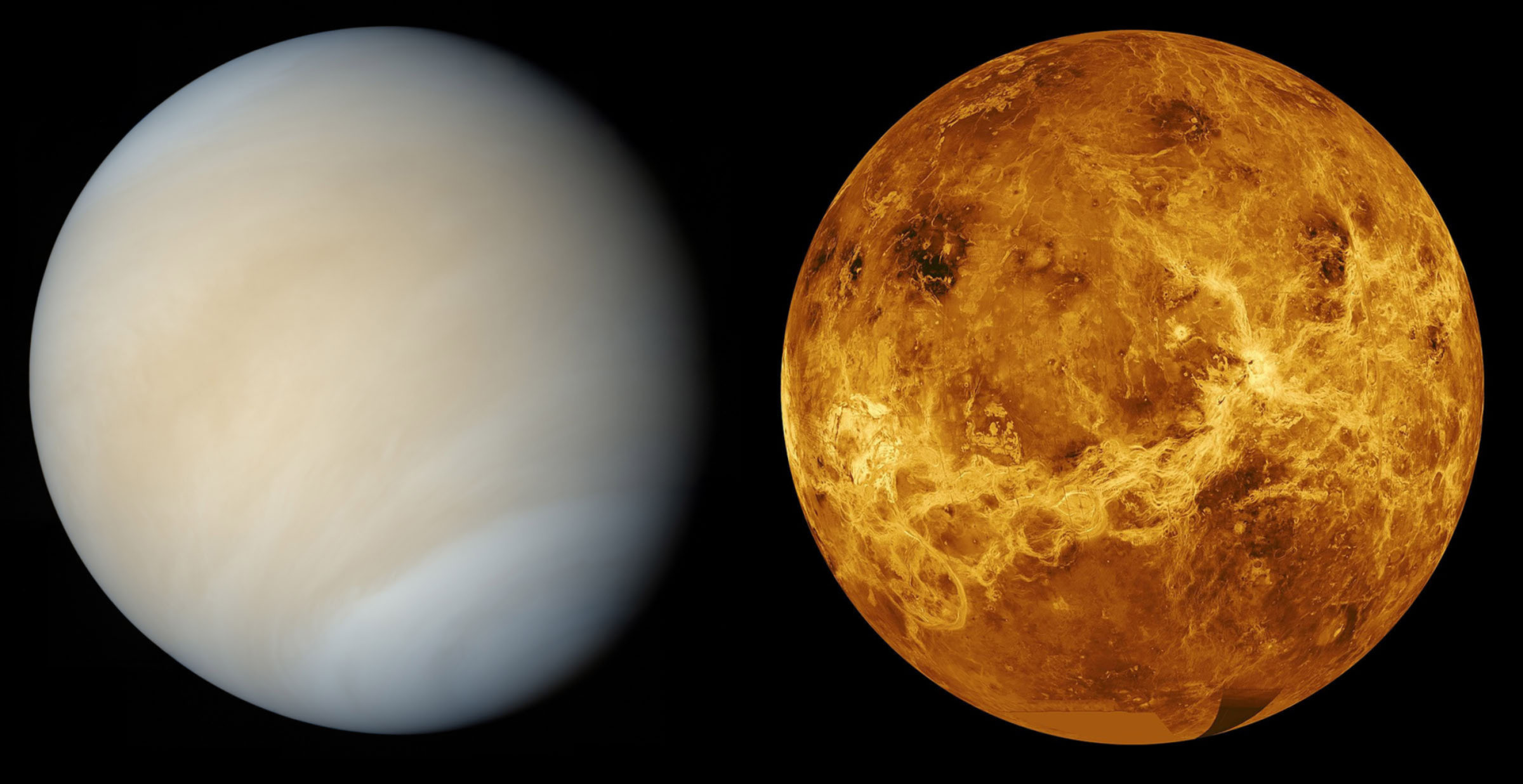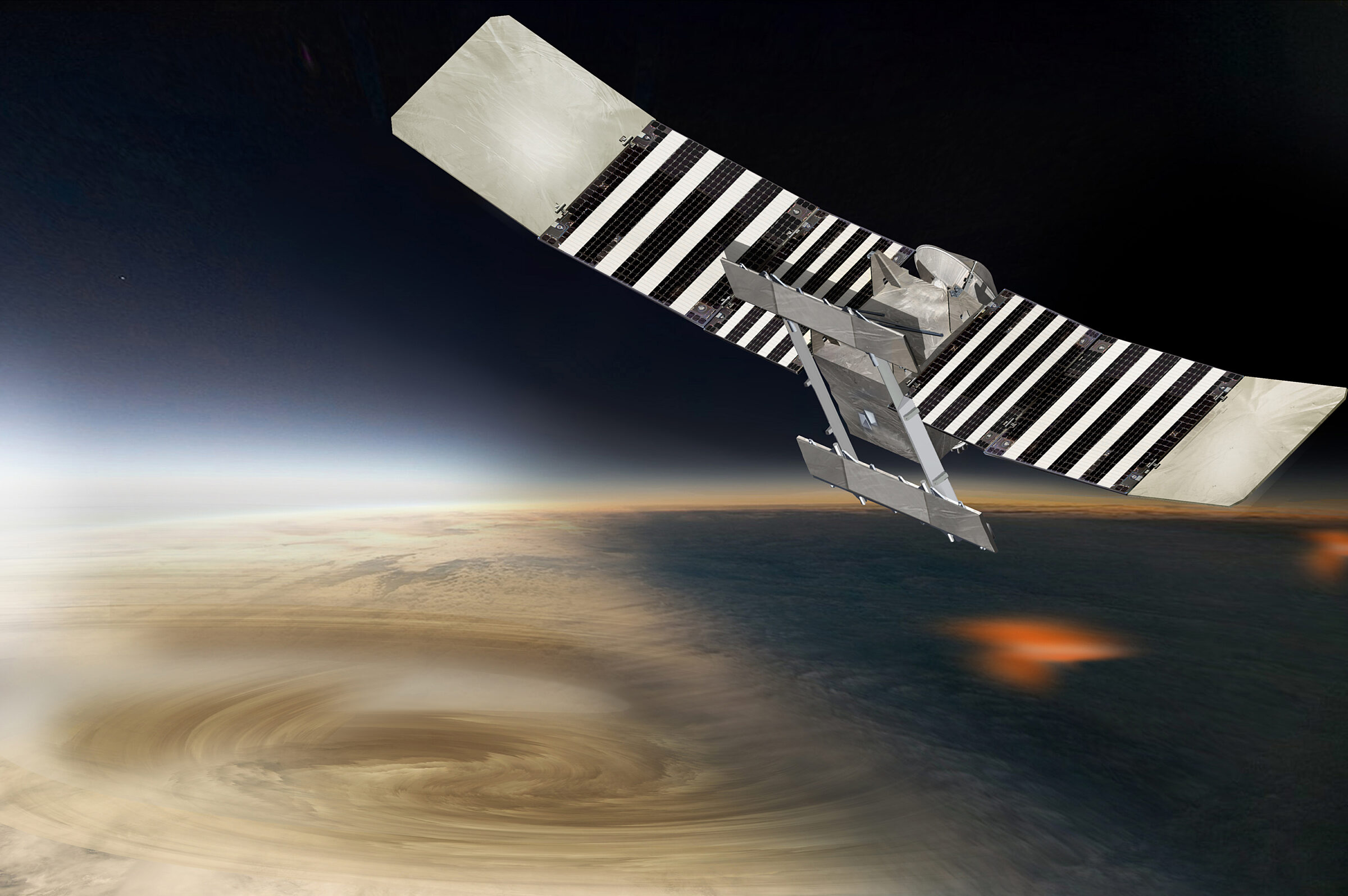Kate Howells • Apr 11, 2023
What would it be like to stand on the surface of Venus?
When learning about the fascinating planets and moons of our Solar System, it’s natural to imagine seeing the place for yourself, perhaps exploring the lava tubes of the Moon or hiking the mountains of Mars. But when it comes to Venus, the more you learn about its surface conditions, the less you’d want to picture yourself there. With extreme heat and crushing atmospheric pressure, the surface of Venus is one of the most deadly environments in the Solar System.
Although we definitely don’t recommend it, here’s what it would be like to stand on the surface of Venus.

Under pressure
The main reason Venus would be so extremely unpleasant to visit is that it has a particularly intense atmosphere. Ninety-three times thicker than Earth’s, it is the densest terrestrial atmosphere in the Solar System.
If you were standing on the surface of Venus, all of that atmosphere above you would create crushing pressure. The atmospheric pressure at sea level on Earth is about 1 bar, or 14.7 pounds per square inch (psi). The atmospheric pressure on the surface of Venus is about 92 bar, or 1,350 psi. To put this into context, imagine having 1,350 pounds (over 600 kilograms) resting on one square inch of your body; it would be like having a small car sitting on your thumbnail.
Another way of contextualizing the atmospheric pressure is to imagine being a kilometer (about 0.6 miles) underwater, with all that water pushing down on you. Deep sea missions that visit such depths in our oceans need to use special submarines that have been reinforced to withstand the intense pressure. An unprotected diver wouldn’t stand a chance, unable to breathe their tank’s oxygen because of all the pressure pushing in on their chest. Standing on the surface of Venus, you’d essentially be crushed by the sheer mass of all the atmosphere on top of you.

Too hot to handle
Mercury is closer than Venus to the Sun, but because of its atmosphere, Venus has by far the hottest planet surface in the Solar System. The thick Venusian atmosphere is composed mainly of carbon dioxide, which — as we know from its role in climate change on Earth — is a greenhouse gas. When the Sun’s light heats Venus, the heat can’t efficiently radiate back into space because it’s trapped by the carbon dioxide in the atmosphere. This heats the planet up dramatically.
On the surface of Venus, temperatures can reach around 460 degrees Celsius (860 degrees Fahrenheit). This is hot enough to melt lead.
Needless to say, it wouldn’t be nice to be exposed to this kind of heat. Even the most advanced protective clothing like firefighter suits aren’t able to withstand these kinds of temperatures over prolonged periods of time. If you found yourself on Venus in your regular clothes, you would quickly suffer burns severe enough to kill you.
So how can we safely explore Venus?
The extreme and deadly conditions on the surface of Venus make it an unlikely place for human exploration, since even the most advanced space suits wouldn’t be able to completely protect astronauts. Robotic spacecraft would fare better, since they can be made from very durable materials and don’t need to breathe. But even robots have had a hard time exploring the surface of Venus in the past.
Only a handful of spacecraft have successfully operated on the Venusian surface, although many more have tried and failed due to various technical problems and the harsh conditions on Venus. Even the successful missions were only able to operate for hours at most before being destroyed by the planet’s extreme conditions. That’s why there are so few pictures of the surface of Venus.
Future missions to Venus will mainly study it from orbit, where the conditions are much more favorable. High above the planet, spacecraft can peer down through the atmosphere without having to contend with its influence. NASA’s proposed VERITAS mission aims to map the Venusian surface from orbit, achieving higher resolution than ever before. From afar, it could help us understand the surface of Venus better than any robotic lander or human mission. This mission, which could revolutionize our understanding of this hostile but fascinating world, is facing an indefinite delay due to budget cuts and needs the support of space advocates like you.

Support our core enterprises
Your support powers our mission to explore worlds, find life, and defend Earth. You make all the difference when you make a gift. Give today!
Donate

 Explore Worlds
Explore Worlds Find Life
Find Life Defend Earth
Defend Earth

